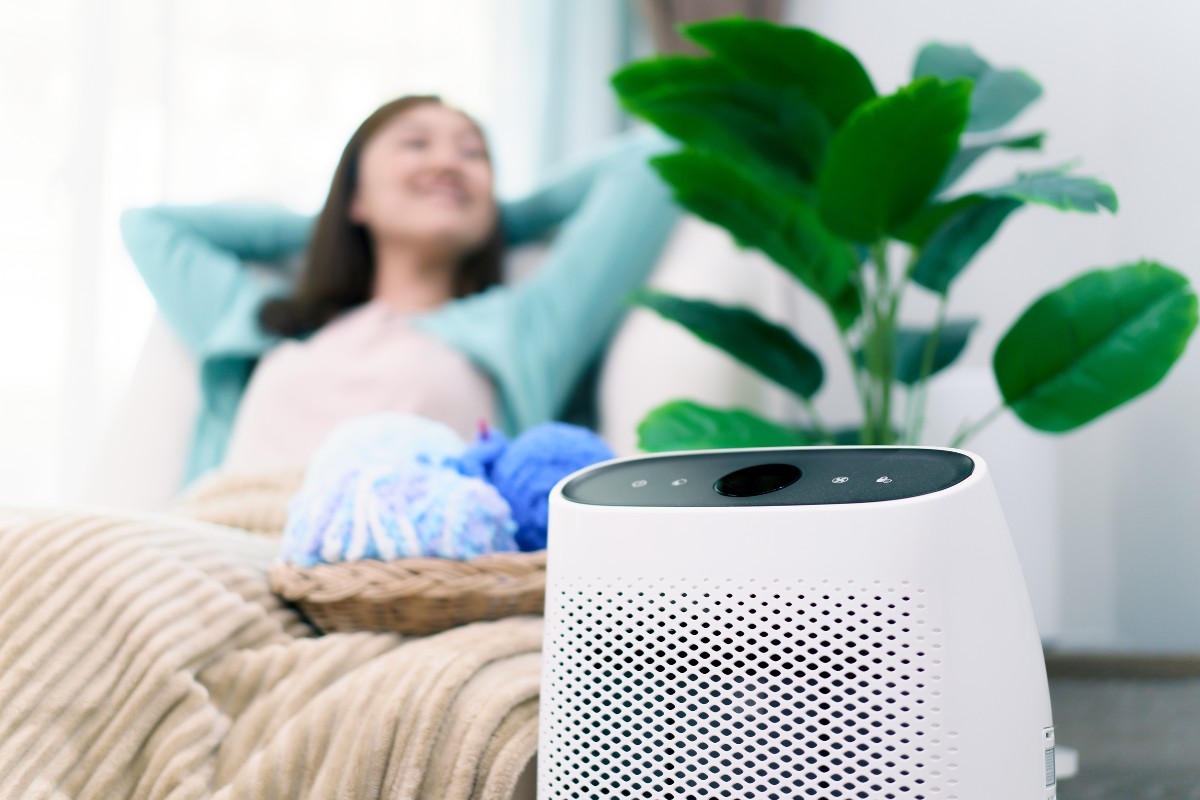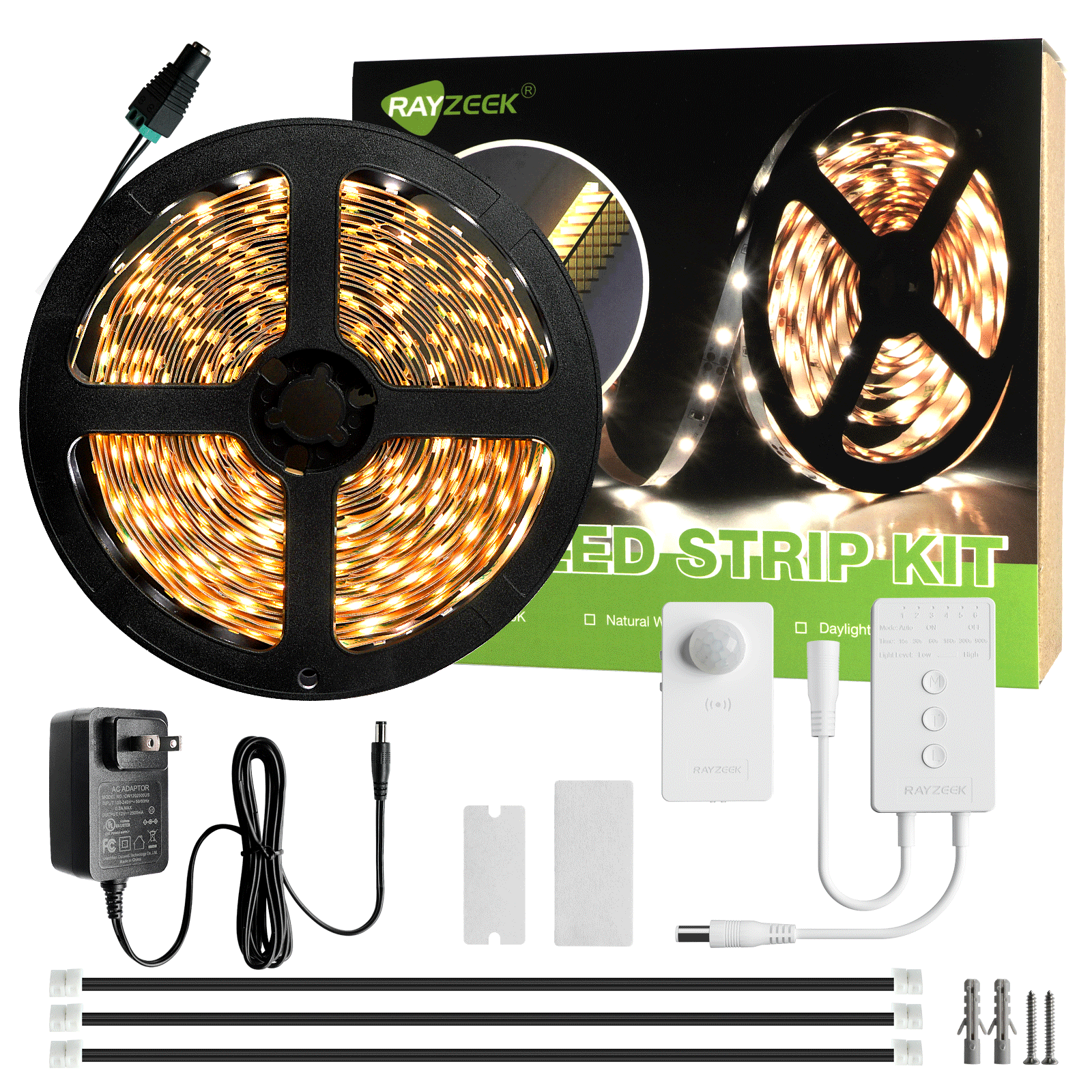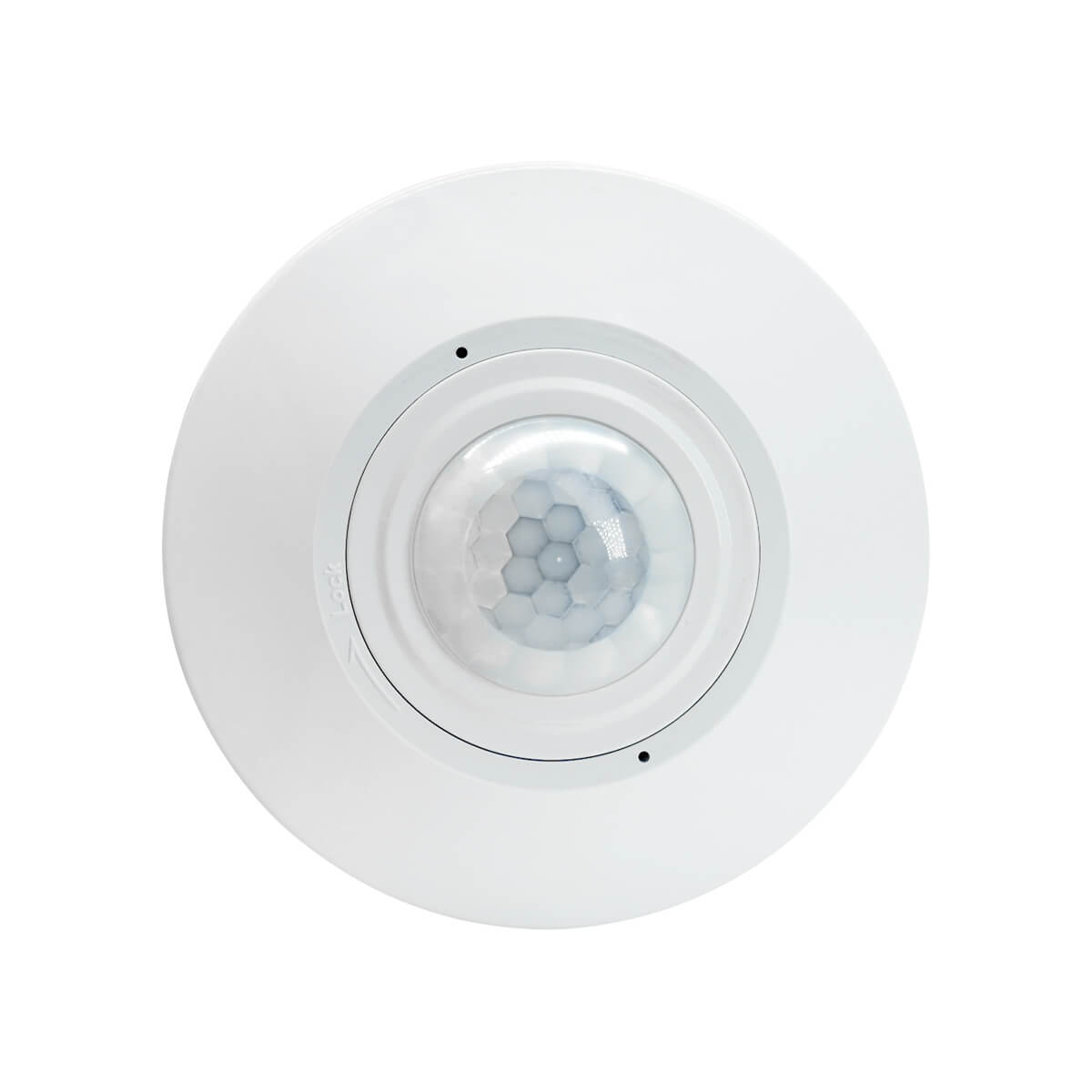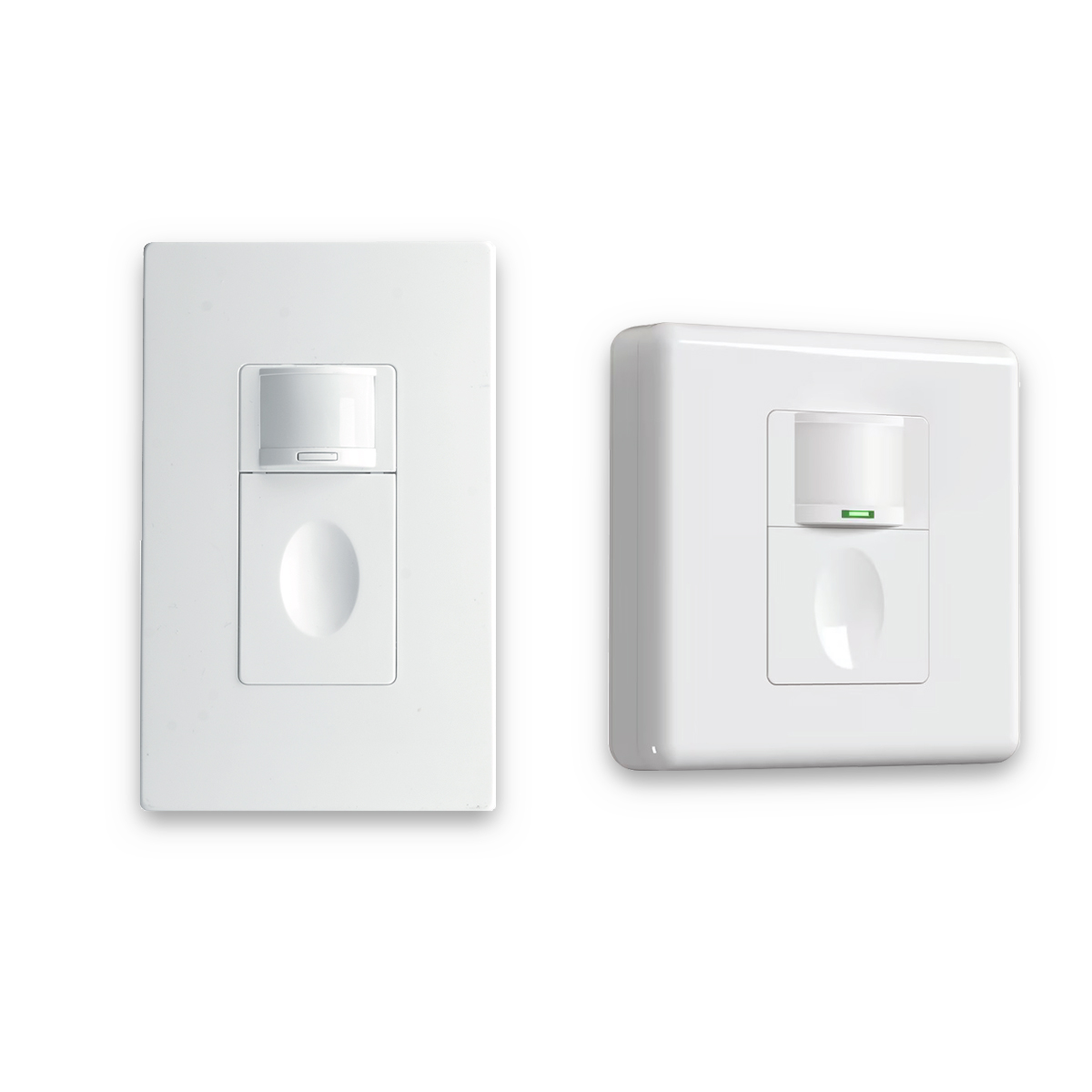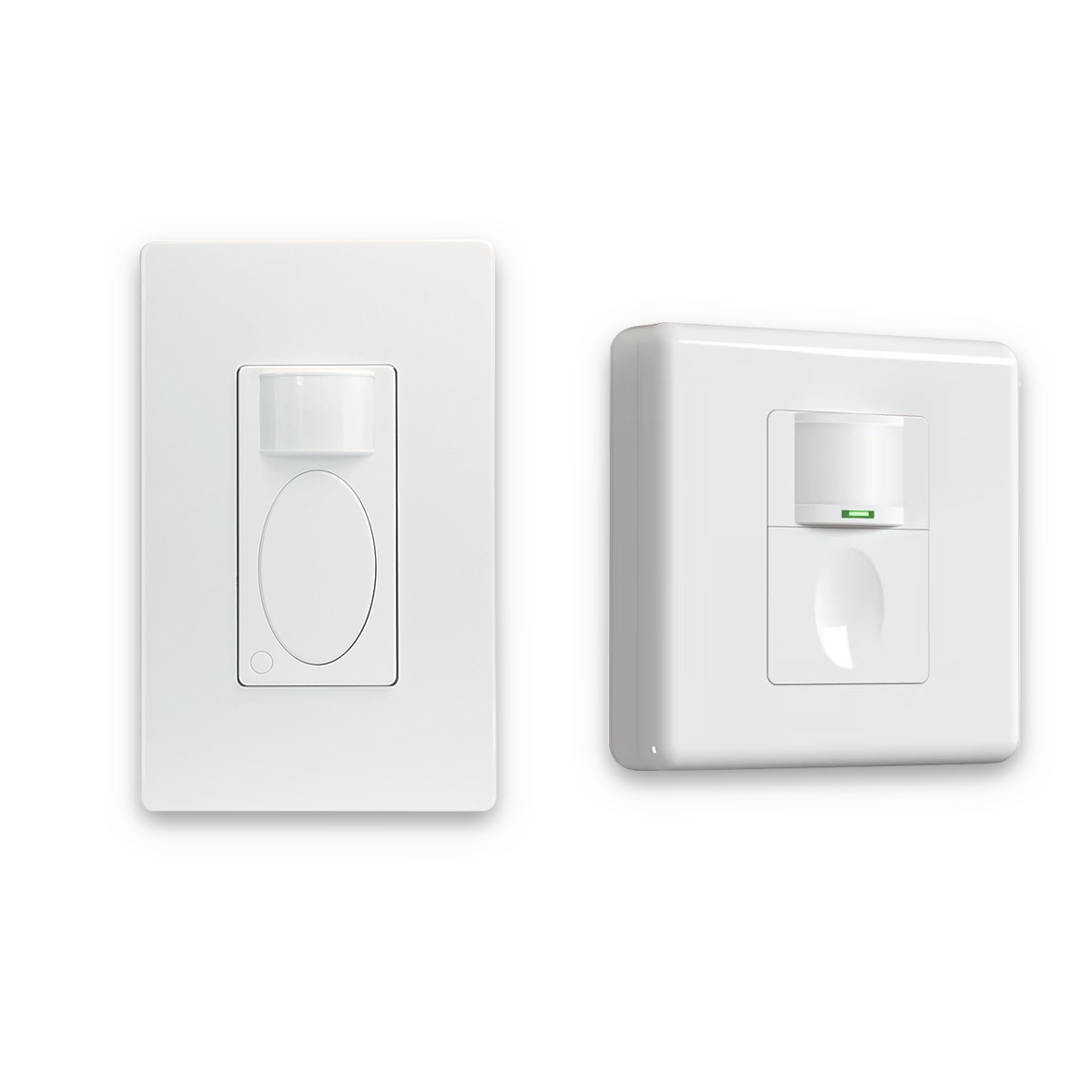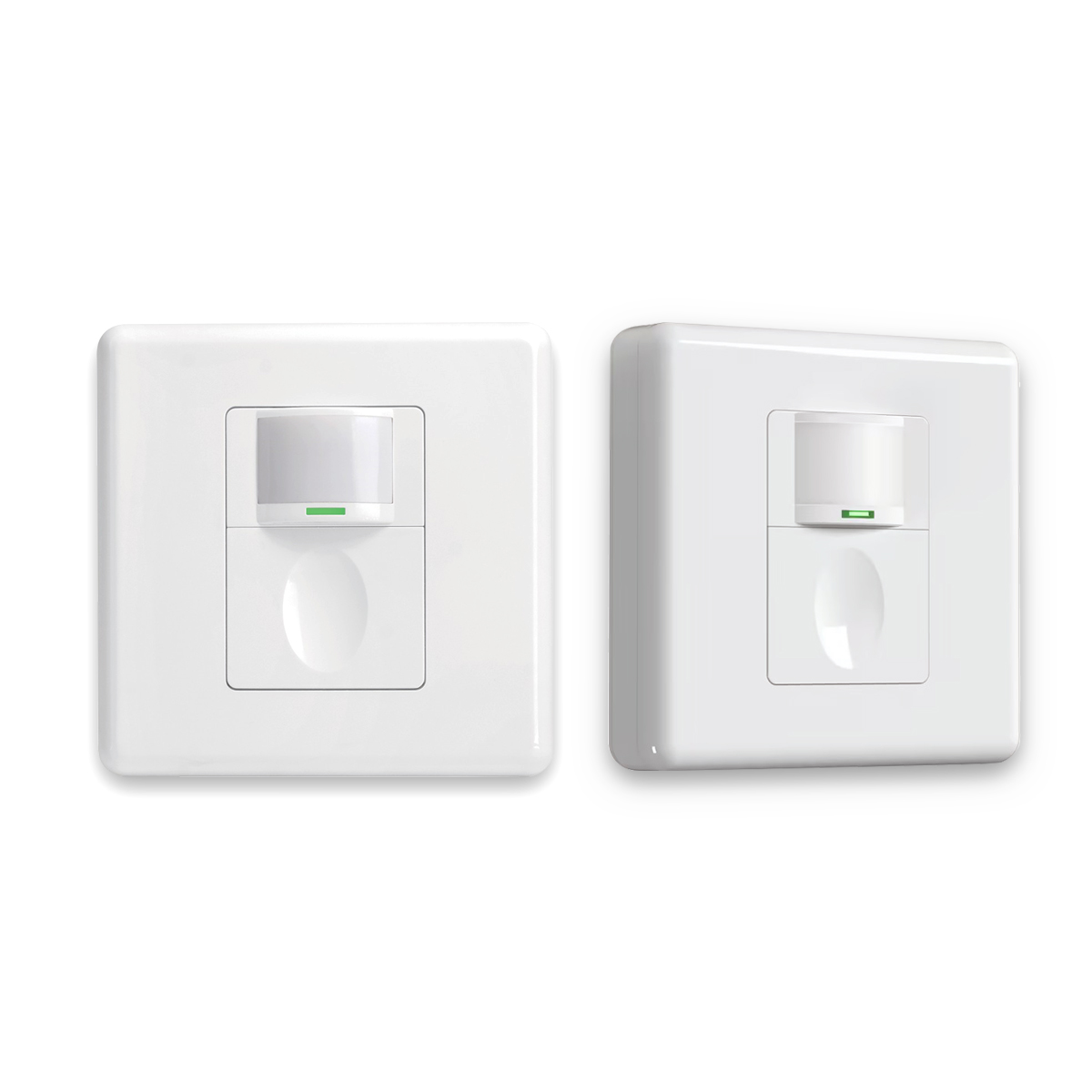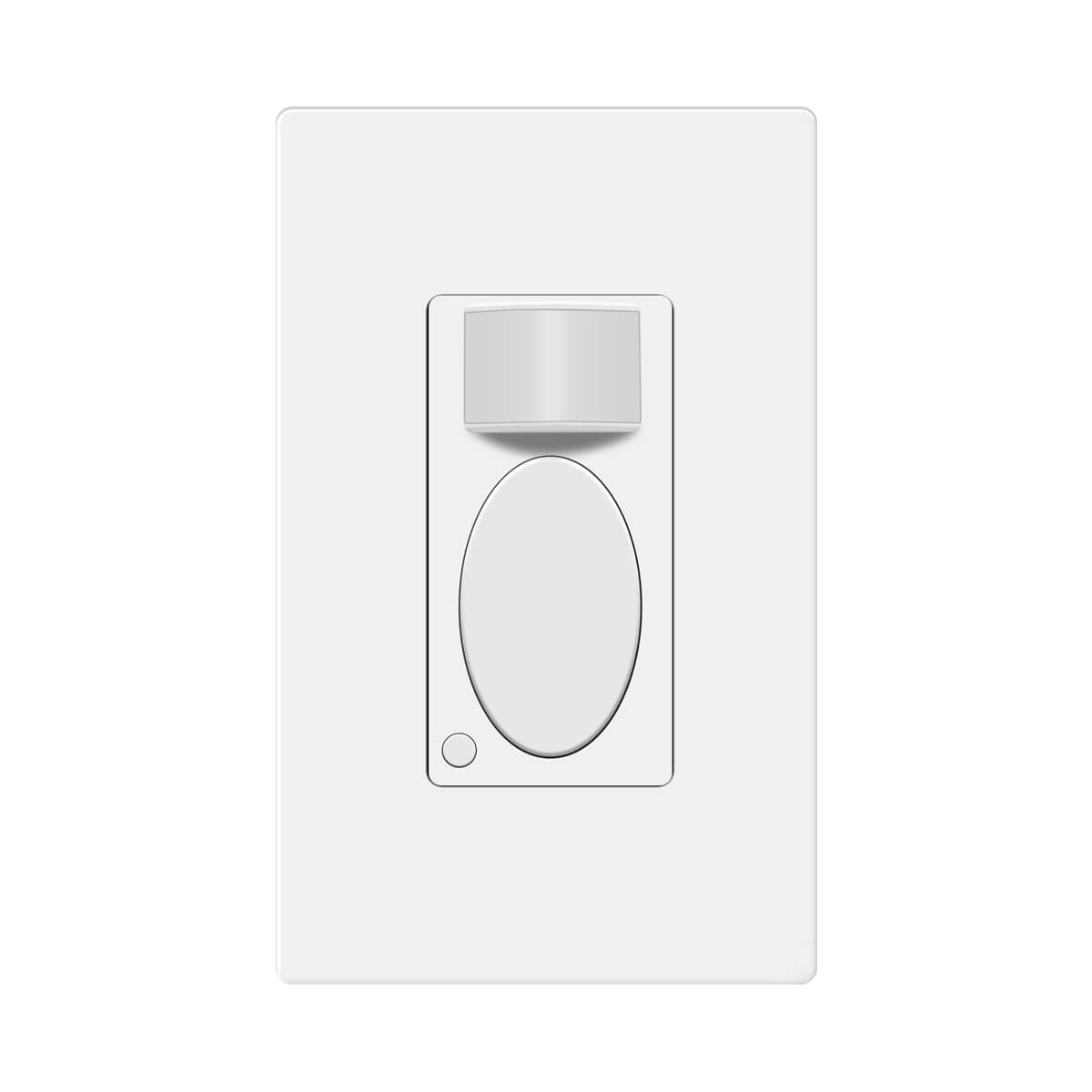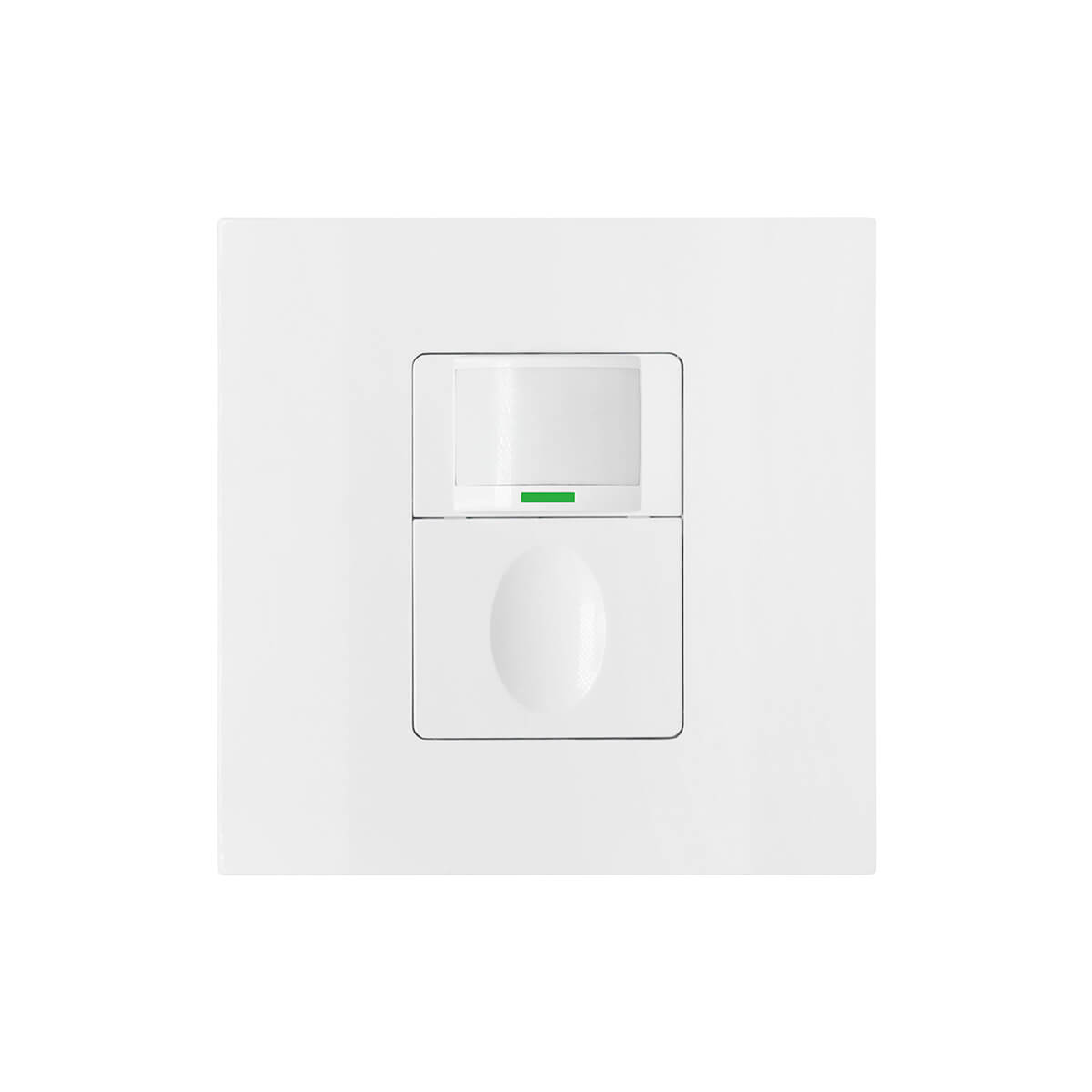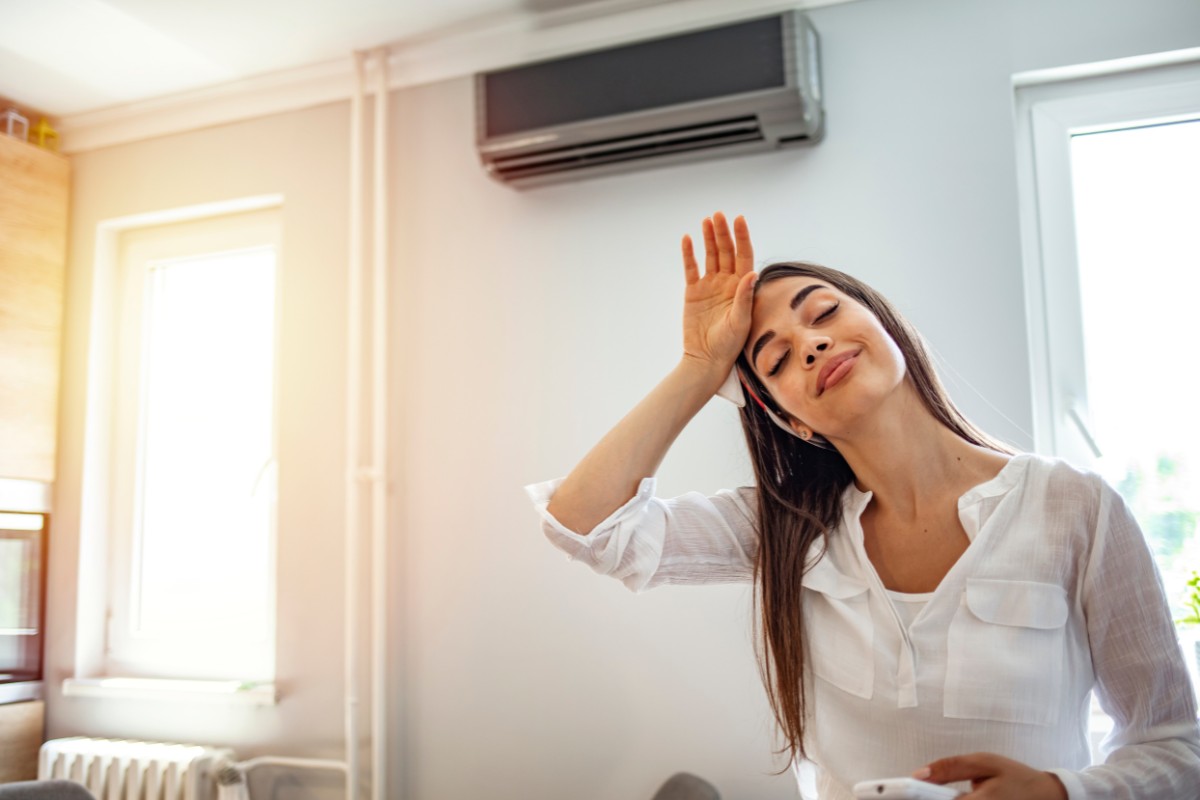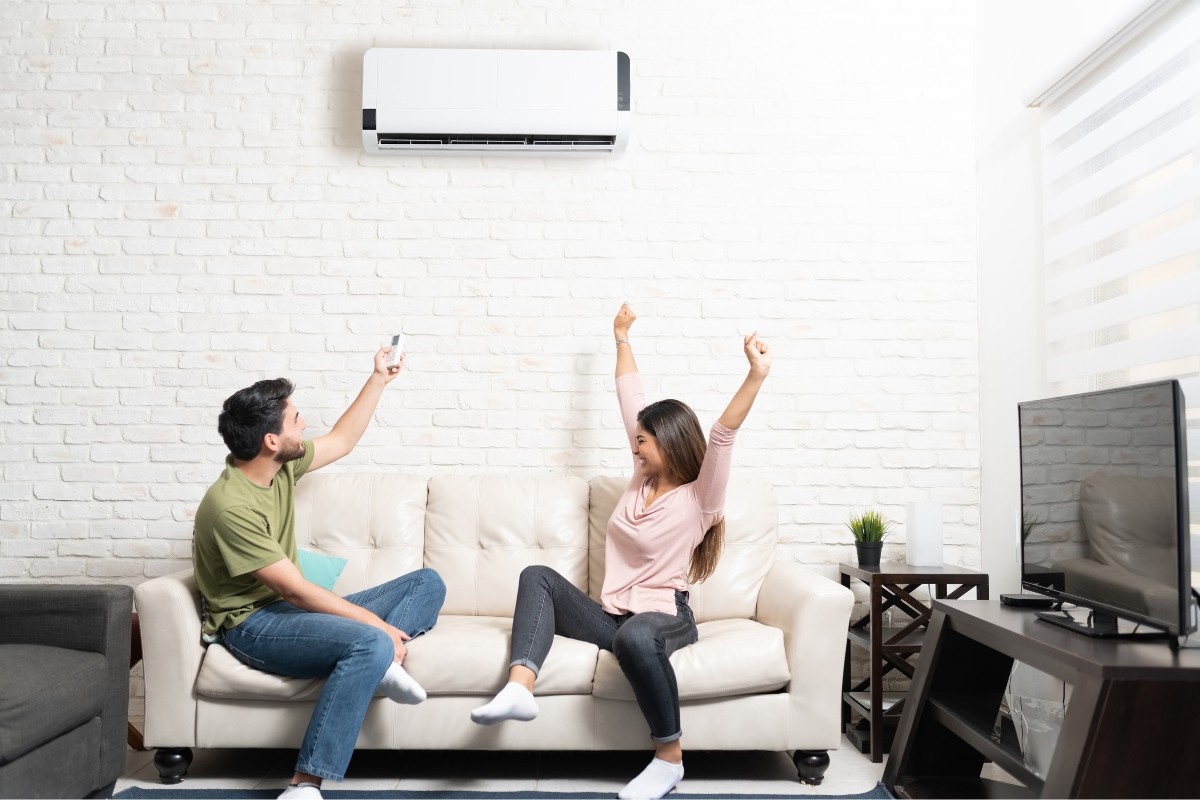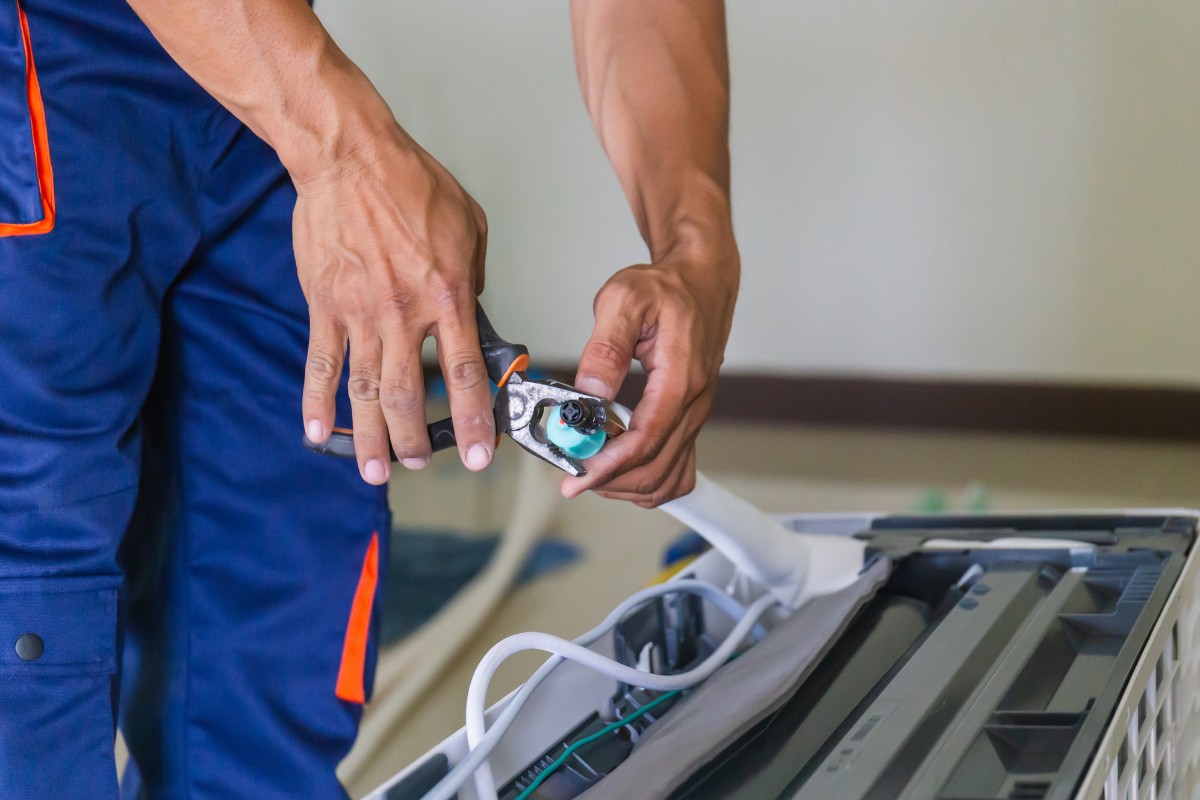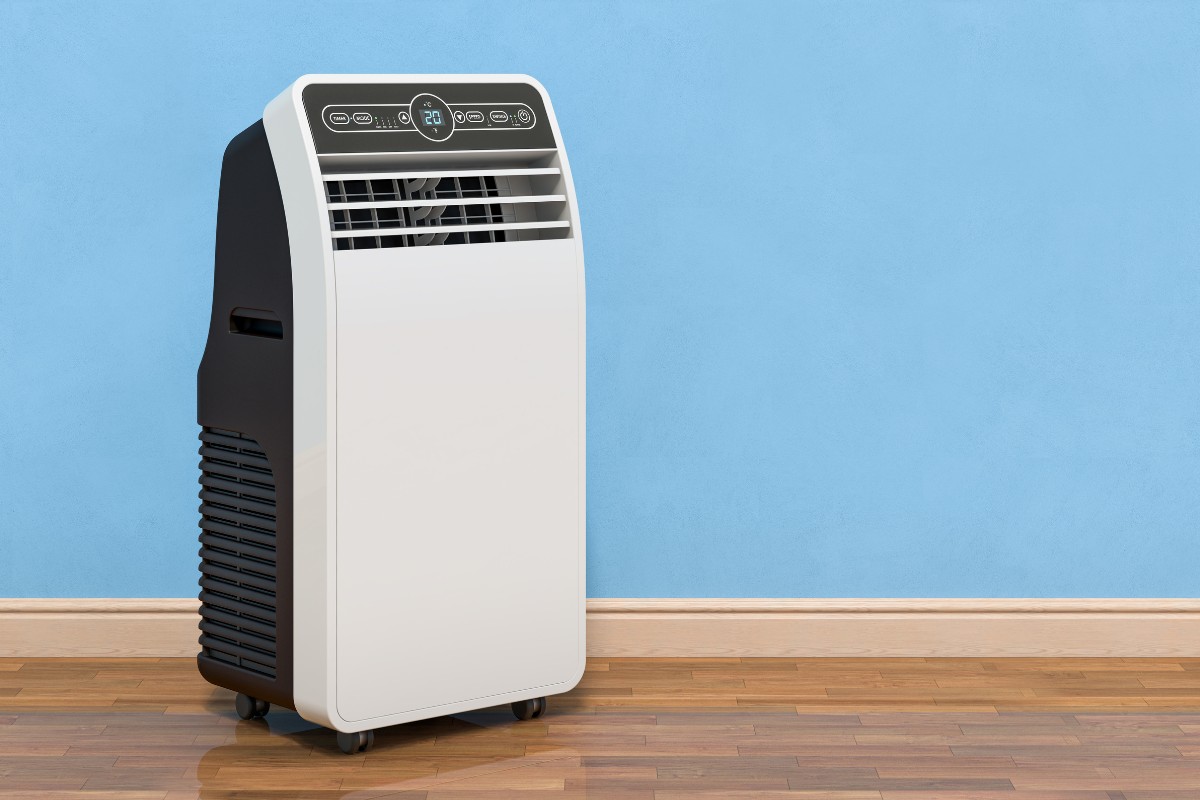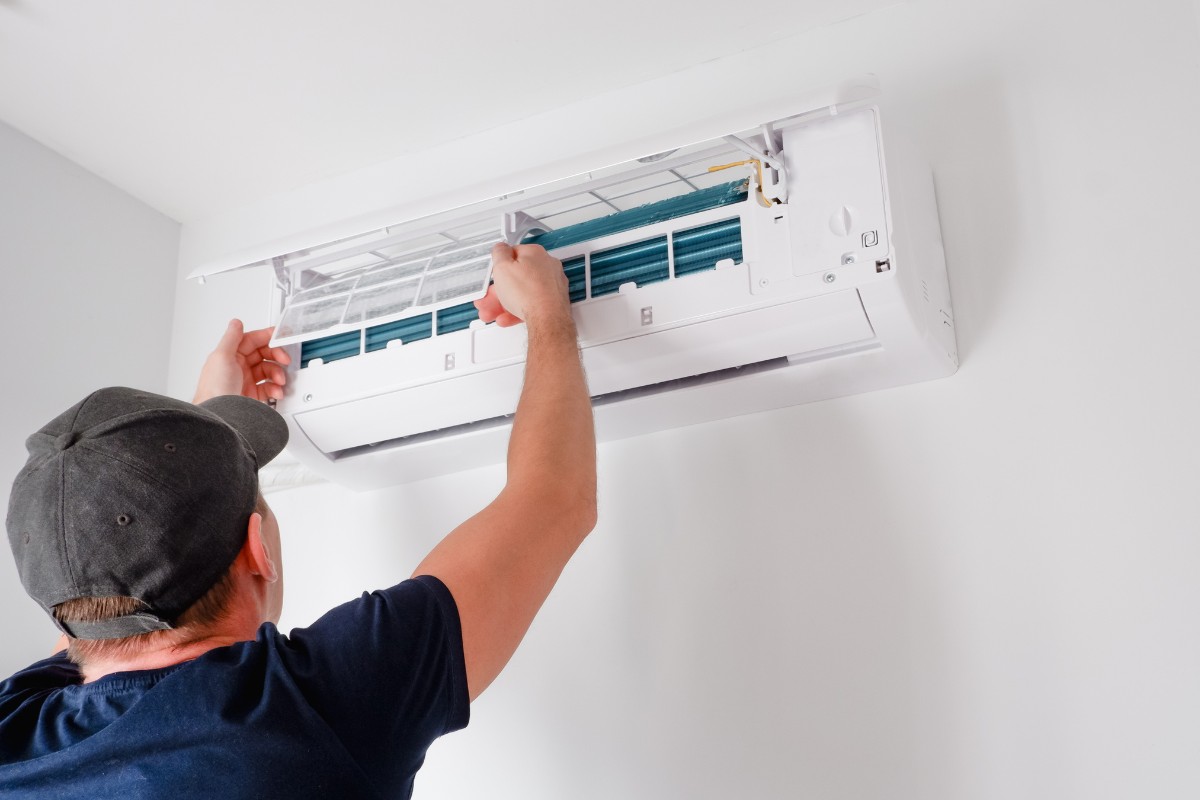Portable air conditioners have become a popular cooling solution for many, offering a flexible alternative to traditional window units or central air conditioning. They are designed to be easily moved from room to room, providing relief from the heat where it’s needed most. But the question remains: do they truly work? This article will delve into the functionality, efficiency, and limitations of portable air conditioners, providing a comprehensive overview for anyone considering this cooling option. We’ll explore everything from the basic principles of operation to the intricate details of energy efficiency ratings, helping you make an informed decision about whether a portable air conditioner is right for you.
What Is a Portable Air Conditioner?
A portable air conditioner is a self-contained cooling unit that you can easily move around your home. Unlike window units that require a more permanent installation, these devices sit on the floor and use a hose to vent hot air out of a window. They’re designed to cool individual rooms or smaller areas, and they come in different sizes and cooling capacities. This capacity is measured in British Thermal Units (BTUs), which we’ll discuss in more detail later.
Як працюють портативні кондиціонери
Portable air conditioners use the same vapor-compression refrigeration cycle that powers other types of air conditioners. It might sound complex, but it’s a fascinating process that’s worth understanding.
The Refrigeration Cycle in Portable Air Conditioners
Imagine a special fluid, called a refrigerant, circulating through a closed system of coils within the unit. This fluid is the key to the cooling magic. The process begins with the compressor, which pressurizes the refrigerant, turning it into a hot, high-pressure gas. Think of it like squeezing a gas – it heats up.
Next, this hot refrigerant travels to the condenser coils. Here, a fan blows outside air over the coils, which helps dissipate the heat. As the heat is released, the refrigerant cools down and condenses back into a warm, high-pressure liquid.
This liquid refrigerant then passes through an expansion valve. This valve’s job is to rapidly reduce the pressure of the refrigerant. As the pressure drops, so does the temperature, transforming the refrigerant into a cold, low-pressure liquid.
Finally, this cold refrigerant flows through the evaporator coils. Another fan blows room air over these coils. The cold refrigerant absorbs heat from the air, cooling it down. As it absorbs heat, the refrigerant evaporates back into a cool, low-pressure gas.
And the cycle begins anew! The compressor pulls in this cool gas and starts the process all over again, continuously cooling the room.
Key Components and Their Functions:
- Компресор: Compresses the refrigerant, increasing its temperature and pressure.
- Конденсатор: Dissipates heat from the refrigerant to the outside air.
- Розширювальний клапан: Reduces the pressure and temperature of the refrigerant.
- Випарник: Absorbs heat from the room air, cooling it.
- Fans: Circulate air over the condenser and evaporator coils.
- Thermostat: Regulates the cooling process based on the desired temperature.
- Air Filter: Removes dust and other particles from the air.
Single-Hose vs. Dual-Hose Portable Air Conditioners
When shopping for a portable air conditioner, you’ll encounter two main types: single-hose and dual-hose models. The difference lies in how they handle air intake and exhaust, and it has a significant impact on their efficiency.
The Problem with Single-Hose Models:
Single-hose models, as the name suggests, use a single hose to exhaust hot air outside. While this might seem simple enough, it creates a problem. To cool the condenser coils, these units draw air from the very room they’re trying to cool. This creates negative air pressure within the room.
Надихайтеся портфоліо датчиків руху Rayzeek.
Не знайшли те, що хотіли? Не хвилюйся. Завжди є альтернативні шляхи вирішення ваших проблем. Можливо, одне з наших портфоліо може допомогти.
What happens when there’s negative pressure? Nature abhors a vacuum, so hot, unconditioned air from outside or other rooms gets sucked in through any cracks or gaps around doors and windows. This influx of hot air counteracts the cooling process, making the unit work harder and longer to achieve the desired temperature. Studies, including one by Consumer Reports, have shown that single-hose models can use up to 50% more energy to cool the same space compared to their dual-hose counterparts.
How Dual-Hose Models Improve Efficiency:
Dual-hose models offer a clever solution to this problem. They use one hose to exhaust hot air, just like single-hose models, but they have a second hose dedicated to intake. This intake hose draws in air from outside specifically to cool the condenser.
By using outside air for this purpose, dual-hose models avoid creating negative pressure in the room. This prevents hot air infiltration and significantly improves cooling efficiency. As a result, they cool rooms faster and use less energy than single-hose models. Some manufacturers even claim that their dual-hose models are 40-50% more efficient.
Portable Air Conditioner Cooling Capacity: Understanding BTUs
BTU, or British Thermal Unit, is a crucial concept when it comes to air conditioners. It’s a measure of cooling capacity, representing the amount of heat an air conditioner can remove from a room in one hour. One BTU is the amount of heat required to raise the temperature of one pound of water by one degree Fahrenheit. So, the higher the BTU rating, the more powerful the air conditioner.
Calculating the Right BTU for Your Room:
Choosing the right BTU size is essential for effective cooling. A unit that’s too small will struggle to cool the room, while one that’s too large will cycle on and off too frequently, leading to inefficient operation and potentially higher humidity levels.
A general rule of thumb is to use 20 BTUs per square foot of living space. For example, a 300-square-foot room would typically need a 6,000 BTU portable air conditioner (300 x 20 = 6,000).
Impact of Ceiling Height and Insulation on BTU Needs:
However, this is just a starting point. Several other factors can influence your BTU needs. For instance, high ceilings require more cooling power. You might need to add 10-20% to the BTU requirement for every 2 feet of ceiling height above 8 feet.
Insulation also plays a significant role. Poorly insulated rooms lose cool air more easily, requiring a more powerful air conditioner. In such cases, you might need to add 20-30% to the BTU requirement. Conversely, well-insulated rooms retain cool air better, potentially allowing you to use a slightly smaller unit and save on energy costs. You might be able to subtract 10-20% from the BTU requirement for well-insulated spaces.
Other Factors:
- Window Size and Orientation: Large windows, especially those facing south, let in a lot of sunlight and heat. If your room has such windows, consider adding 10-20% to your BTU needs.
- Shading: On the other hand, if your room is well-shaded, you can subtract 10-15% from the BTU requirement.
- Occupancy: More people in a room generate more body heat. Add about 600 BTUs for each additional person beyond two.
- Appliances: Heat-generating appliances like computers and lamps also contribute to the heat load. Add 400-500 BTUs for each appliance that’s regularly used in the room.
Refined BTU Calculation:
Шукаєте енергозберігаючі рішення, що активуються рухом?
Звертайтеся до нас за комплексними PIR-датчиками руху, енергозберігаючими продуктами, що активуються рухом, вимикачами з датчиками руху та комерційними рішеннями для датчиків зайнятості/вакантності.
Let’s break down a more refined way to calculate your BTU needs:
- Base BTU: Start with the basic calculation: Square footage x 20.
- Ceiling Adjustment: If your ceiling is higher than 8 feet, calculate the adjustment: Base BTU x (Ceiling height – 8) x 0.05.
- Insulation Adjustment: Estimate the insulation factor: Poor (0.25), Average (0), Good (-0.15). Then calculate: Base BTU x Insulation factor.
- Window Adjustment: Estimate the window factor: Large/South-facing (0.15), Average (0), Shaded (-0.1). Then calculate: Base BTU x Window factor.
- Occupancy Adjustment: If more than two people regularly use the room, calculate: (Number of people – 2) x 600.
- Appliance Adjustment: If you have heat-generating appliances, calculate: Number of appliances x 450.
- Total BTU: Add up all the adjustments to your Base BTU: Base BTU + Ceiling Adjustment + Insulation Adjustment + Window Adjustment + Occupancy Adjustment + Appliance Adjustment.
This final number gives you a more accurate estimate of the BTU capacity you need for your specific situation.
Energy Efficiency of Portable Air Conditioners: EER, CEER, and SACC Ratings
When it comes to energy efficiency, portable air conditioners have a few different ratings you should be aware of: EER, CEER, and SACC. These ratings help you understand how much cooling you’re getting for the amount of electricity used.
Understanding the Differences Between EER, CEER, and SACC:
- EER (Energy Efficiency Ratio): This is the most basic rating. It measures the cooling output (in BTUs) per watt of electricity consumed under a specific test condition: 95°F outside, 80°F inside, and 50% humidity.
- CEER (Combined Energy Efficiency Ratio): This rating is a bit more comprehensive. It also measures cooling output per watt of electricity, but it considers both active cooling mode and standby power consumption. It uses the same test conditions as EER but also factors in the energy used when the unit isn’t actively cooling, giving you a better idea of overall energy use.
- SACC (Seasonally Adjusted Cooling Capacity): This is the newest rating, and it’s designed to provide a more realistic estimate of cooling performance in typical usage scenarios. It represents the weighted average cooling capacity under various test conditions, including different outdoor temperatures and humidity levels.
How to Choose an Energy-Efficient Model:
The simple rule is to look for models with higher EER, CEER, and SACC ratings. The higher the number, the more energy-efficient the unit is. The Department of Energy (DOE) recommends choosing models with a CEER of 8.5 or higher and an SACC of 6,500 BTUs or higher.
Why are these ratings important? Because a more energy-efficient model will use less electricity to cool your room, which can save you money on your energy bills. For example, a model with a CEER of 10 will use about 15% less energy than a model with a CEER of 8.5. Over time, these savings can really add up!
Limitations of Portable Air Conditioners
While portable air conditioners can be a convenient cooling solution, it’s important to be aware of their limitations. They are not always the most efficient option, and certain factors can impact their performance.
Inefficiencies Compared to Other Cooling Systems:
Compared to window units or central air conditioning, portable air conditioners are generally less efficient. They tend to have lower EER and CEER ratings, meaning they use more energy to provide the same amount of cooling. This is due to several factors, including heat gain from the exhaust hose, air infiltration (especially in single-hose models), and the fact that the unit itself generates some heat while operating.
The Impact of Hot Air Infiltration:
We’ve already discussed how single-hose models create negative pressure, drawing in hot air from outside. This significantly reduces their cooling efficiency and makes them work harder. Even dual-hose models, while better, can experience some degree of air infiltration, although it’s usually less pronounced.
Hose Design and Efficiency:
The design of the exhaust hose itself can also impact efficiency. Here are a few things to consider:
- Length: Longer hoses have more surface area exposed to the warm room air, which can lead to heat gain and reduced efficiency. A 10-foot hose, for instance, might reduce cooling capacity by 5-10% compared to a 5-foot hose.
- Diameter: Narrower hoses restrict airflow, making the unit work harder to expel hot air. A 4-inch diameter hose could reduce airflow by 20-30% compared to a 6-inch diameter hose.
- Insulation: Poorly insulated hoses allow heat to radiate back into the room, counteracting the cooling process. An uninsulated hose might increase heat gain by 10-15% compared to an insulated one.
- Material: The material of the hose can also play a role. Some materials conduct heat better than others, affecting how much heat is transferred back into the room.
These factors might seem small, but they can collectively impact the overall performance and efficiency of your portable air conditioner.
Noise Levels of Portable Air Conditioners
Portable air conditioners are known for being somewhat noisy, with sound levels typically ranging from 50 to 70 decibels (dB). The primary culprits are the compressor, which is the heart of the cooling system, and the fans that circulate air.
The noise level can vary depending on the specific model, the fan speed you’ve selected, and the operating mode. Some models boast noise-reduction features, such as insulated compressors and variable-speed fans, which can help minimize the noise output.
To put these numbers into perspective:
- 50 dB is comparable to a quiet conversation.
- 60 dB is similar to a normal conversation.
- 70 dB is about as loud as a vacuum cleaner.
So, while a portable air conditioner might not be as quiet as central air, it’s generally within an acceptable range for most people, especially during the daytime.
Portable Air Conditioners vs. Other Cooling Options
When considering a portable air conditioner, it’s helpful to compare it with other cooling options to see how it stacks up.
Portable Air Conditioners vs. Window Units:
- Efficiency: Window units are generally more efficient than portable ACs, boasting higher EER and CEER ratings. This means they use less energy to provide the same level of cooling.
- Space: Window units don’t take up any floor space, which can be a significant advantage in smaller rooms.
- Cost: Window units are typically less expensive to purchase than portable ACs.
- Installation: Portable ACs are generally easier to install and move around. You can simply roll them to a different room if needed.
- Flexibility: Portable ACs can be used in rooms where window units aren’t feasible, such as rooms without suitable windows.
Portable Air Conditioners vs. Central Air Conditioning:
- Efficiency: Central air conditioning is the most efficient cooling option, providing consistent cooling throughout the entire house.
- Cooling Coverage: Central AC cools the entire house evenly, unlike portable units that are limited to a single room.
- Noise: Central AC is generally quieter than portable ACs, as the main unit is located outside.
- Cost: Central AC requires professional installation and is significantly more expensive upfront.
- Flexibility: Portable ACs are a good option for cooling individual rooms or for homes that don’t have ductwork for central air.
Portable Air Conditioners vs. Evaporative Coolers:
- Energy Efficiency: Evaporative coolers, also known as swamp coolers, are more energy-efficient than portable ACs, especially in dry climates.
- Moisture: Evaporative coolers add moisture to the air, which can be beneficial in dry environments but less desirable in humid areas.
- Effectiveness: Evaporative coolers are less effective in humid climates, as they rely on the evaporation of water to cool the air.
- Consistency: Portable ACs provide more consistent cooling regardless of humidity levels.
Installation and Maintenance of Portable Air Conditioners
One of the biggest advantages of portable air conditioners is their ease of installation. You don’t need any special tools or professional help.
Installation Steps:
- Choose a Location: Find a spot near a window and an electrical outlet.
- Connect the Hose(s): Attach the exhaust hose (or hoses, for dual-hose models) to the window kit and the unit itself.
- Adjust the Window Kit: Extend the window kit to fit snugly in your window opening, creating an airtight seal.
- Plug It In: Plug the unit into the outlet and turn it on.
That’s it! You’re ready to enjoy the cool air.
Routine Maintenance and Troubleshooting:
To keep your portable air conditioner running smoothly and efficiently, regular maintenance is key:
- Clean or Replace the Air Filter: This is probably the most important maintenance task. A dirty filter restricts airflow, making the unit work harder and reducing its efficiency. Clean or replace the filter every 2-4 weeks, depending on usage and air quality.
- Drain the Condensate Tank: Some models collect water in an internal tank that needs to be emptied periodically. Others have a drain hose that continuously removes water. Make sure to follow the manufacturer’s instructions for your specific model.
- Clean the Exterior: Wipe down the exterior of the unit with a damp cloth to remove dust and dirt.
- Check the Exhaust Hose: Make sure the exhaust hose is free of obstructions and leaks.
Troubleshooting:
Here are a few common issues and how to address them:
- Unit not cooling: If your unit isn’t cooling properly, first check the air filter. A clogged filter is often the culprit. Also, make sure the thermostat is set to a cool enough temperature and that the exhaust hose is properly connected and not blocked.
- Unit making strange noises: Unusual noises could indicate loose parts or something obstructing the fan. Turn off the unit and inspect it for any visible issues.
- Unit leaking water: If you notice water leaking from the unit, check the condensate drain and make sure the unit is level. A tilted unit can cause water to leak.
Portable Air Conditioner Costs
When considering a portable air conditioner, it’s important to factor in the various costs involved:
Можливо, вас зацікавить
- Purchase Price: Portable air conditioners typically range in price from $300 to $800 or more. The price depends on factors like cooling capacity (BTUs), brand, features (such as remote control, timers, and multiple fan speeds), and energy efficiency ratings.
- Operating Costs: The cost to run a portable air conditioner depends on several factors, including how often you use it, your local electricity rates, and the unit’s energy efficiency. For example, let’s say you have a 10,000 BTU portable AC with a CEER of 9. If you use it for 8 hours a day and your electricity rate is $0.15 per kilowatt-hour (kWh), it would cost approximately $1.33 per day to operate.
- Maintenance Costs: Maintenance costs are generally minimal. The main expense is replacing air filters, if your model uses disposable ones. These typically cost a few dollars each.
- Installation Costs: One of the great things about portable air conditioners is that they don’t usually involve any installation costs. They’re designed for easy DIY installation, so you can set them up yourself without needing to hire a professional.
However, one of the most effective ways to reduce operating costs is to ensure the AC isn’t running when it’s not needed. Forgetting to turn off the AC when leaving a room is a common occurrence that can significantly impact your energy bills. This is where a smart solution like the RZ050 AC Motion Sensor can make a real difference. This innovative device automatically turns off your air conditioner when it detects that the room is unoccupied, preventing unnecessary energy consumption and saving you money. By automating this process, the RZ050 helps you enjoy the comfort of a portable air conditioner without the worry of wasted energy and high operating costs.
RZ050 AC Motion Sensor – Save Money on Your Energy Bills
Reduce Your AC Operating Costs Automatically
- Automatically turns off your AC, saving you money
- Easy to install and use – start saving immediately
- Adjustable time delay to fit your lifestyle

